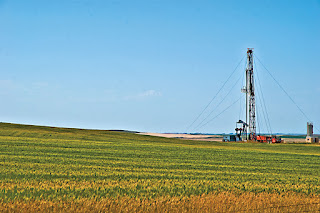Over half the population of the county lives in Sidney, the County Seat. Sidney's 2010 U.S. Census counted 5,191 residents of the city locals call "Montana's Sunrise City." (It is, after all, the city closest to Montana's eastern border, although there are towns further east, indeed Fairview, also in Richland County, which sits right on the state line and is considered the Sugar Beet Capitol of both Montana and North Dakota.) The U.S. Post Office was established in 1888, and given the name Sidney for a six year old boy who was visiting the area at the time. When Richland County came into being, Sidney was named County Seat. Its population grew relatively steadily until the oil boom and bust created anomalous growth as shown in the 1980 census, and once again, like the county it serves, Sidney is growing with the current interest in oil. Revenues from the current boom have allowed the county to construct a new justice center in town, and the lovely court house is being completely renovated. I thank the powers of historic preservation that Richland County did not choose to demolish the grand old building and replace it with a modern box.
The Richland County Court House, Sidney, Montana
While visiting Sidney in August, 2011, I had several interesting experiences. First, I paid more for my motel room than I have paid anywhere, including San Francisco which is notorious for being an expensive city. Second, I had what I consider a unique adventure when, while having dinner in the town's only Chinese restaurant, all conversation around me proceeded in Spanish. Finally, when I asked local residents what they considered the most photogenic place in Richland County, the one place they would want outsiders to know about, every single person I asked replied "Richland Park." I hunted down the park (it's not an easy place to find, in my opinion), and I have to wonder what the locals find so enticing about what appeared to be a muddy river bank with little to no grass. I took pictures, but I won't include them here as I found many places much more worth recording as I traveled the county's back roads--but then that's just my opinion.
Storm Clouds above the Yellowstone River Bluffs
Richland County covers 2,103 square miles, most of which is used for agriculture. With the Missouri River as the county's northern boundary, and the Yellowstone River crossing the county south to north along its eastern edge, there is no shortage of water for irrigation. Important crops include grains, sugar beets, corn, beans and hay, according to the county's website. A new crop, showing up in almost every available field, would seem to be oil pumps, and these are fairly ubiquitous throughout the county. While no federal highway brings traffic to or through the county, Montana Highway 200 crosses it from west to east, and Montana Highway 16 from south to north. Montana Highway 23 is a short road, running from just south of Sidney to the North Dakota border, and Montana Secondary 201 crosses the county west to east with its eastern terminus at Fairview on the North Dakota state line. The county has seemingly no end of county roads, however, most of which are dirt or gravel. (I know, I've driven many miles on those roads.)
Old Farmstead by Dirt Road, Eastern Richland County
Oil Derrick Rising in the Wheat Fields (Central Richland County)
Currently, the future looks bright for Sidney and Richland County, but the community has not forgotten its history. While not actually in Richland County, or in Montana for that matter, both Fort Union and Fort Buford are historical sites nearby in North Dakota that help to bring the history of this region alive. In Sidney itself, the MonDak Heritage Center offers a wide range of programs and displays bringing both historic and current cultural artifacts and events to an appreciative public. The Heritage Center is open Tuesday through Saturday, and is free to the public. Members enjoy special events free of charge, or at a reduced price.
Richland County's web site can be found at: http://richland.org/
The Sidney Area Chamber of Commerce has a very informative site at: http://sidneymt.com/
Photo Information: (All photographs were taken with a Nikon D80 DSLR and a Nikkor 16-85 mm wide angle/tele/zoom lens unless otherwise noted. Clicking on any photograph will open a full-sized image in a new window.)
Richland County Sign: Taken 8/27/2011 on Montana Highway 200 at the McCone/Richland County Line. Focal length 62 mm. ISO 125, f /11.0, 1/90 second.
Richland County Court House: Taken 10/7/2009 in Sidney, Montana. Focal length 20 mm. ISO 250, f /22.0, 1/250 second.
Storm Clouds Above the Yellowstone: Taken 10/7/2009 from Montana Highway 16 near Savage, Montana. Focal length 85 mm. ISO 250, f /22.0, 1/350 second.
Old Farmstead by Dirt Road: Taken 8/27/2011 near Sidney, Montana. Focal length 16 mm. ISO 200, f /11.0, 1/125 second.
Oil Derrick Rising in the Wheat Fields: Taken 8/27/2011 in Central Richland County. Focal length 85 mm. ISO 125, f /11.0, 1/250 second.





No comments:
Post a Comment